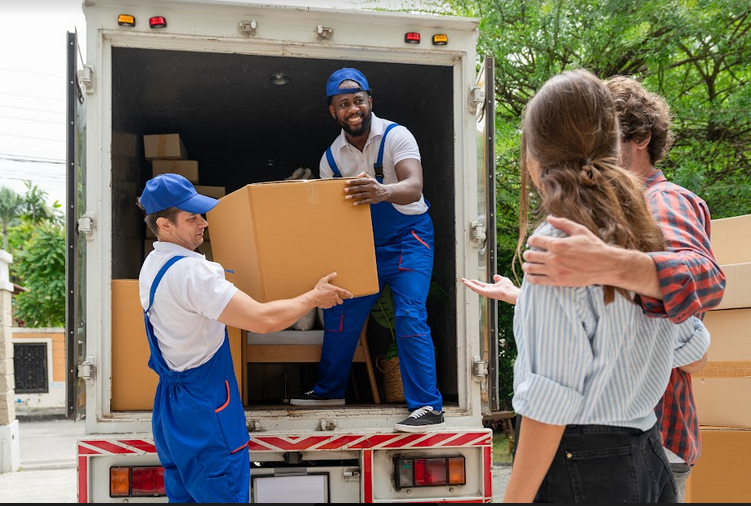New place, new life. Exciting, isn’t it? Moving from one place to another offers a new environment and allows people to meet new friends. It is exhilarating yet stressful. Doing this requires time, effort, and money.
But do you know that moving doesn’t need to be stressful? It would help if you were more prepared and proactive to make things easier. You can start by creating a checklist that will serve as a guide for you.
This article will provide the complete moving checklist, especially if you’re a first-timer.
1. Create A Moving Binder
To create a moving binder, you can use a three-ring binder or a pocket folder with tabs. Make sure that your binder can be divided into sections and can allow you to organize essential moving papers. These can include the following.
- Moving Checklist
- Budget and Expenses
- Moving Company’s Details
- Receipts
- Utilities
- Loan Information
These tabs to be included are just a few. Feel free to add more if necessary. The things that are included in your moving binder must depend on your situation. You can use a software tool to handle and track everything that you need to do.
2. Prepare An Inventory
To create an inventory, you should visit every room and space. You must check all your belongings and decide which ones you want to take with you and which you wish to remove. Moreover, it will help if you look for items requiring special packaging and extra insurance.
Additionally, identify items that need extra time and effort to move. These can include heavy appliances and furniture since all of these are fitted and extremely hard to transport.
After creating the inventory, recheck and sort it out to make the final list. Then, choose and separate all your valuable possessions from unwanted items. Unwanted items can include clothing, furniture, and kitchen items.
You can decide whether you want to donate or sell all of these. If you wish to contribute, present these to a charity. If you prefer to sell the items, make a garage sale or try to post them on the market space.
3. Look For A Moving Company
Ask this question to yourself first. Can I handle this moving process alone, or do I need assistance? If you need professional services, that’s the time you should consider looking for a moving company.
Finalize your budget and look for a moving company three to four weeks ahead. To ensure credibility, you should check out customer reviews. Make sure they have positive feedback from previous clients. Furthermore, determine if they offer good discounts and deals for temporary storage units.
If you have many options, narrow it down to three to four to minimize your list. Investigate the moving companies carefully and select. Once selected, allow your professional mover to plan and estimate your requirements. Establish arrangements with them and acquire the confirmation of your moving dates, moving costs and, others.
4. Obtain Moving Supplies
Moving supplies include the following:
-
Boxes
It will help if you used boxes. You will need a variety of sizes, including small, medium, large, and extra-large ones. If you want to save tons of money, you can contact the nearest convenience and grocery stores and ask if they offer free boxes.
-
Packing Tape
Choose high-quality packing tape that you can use to seal boxes. Consider buying extra because you’ll need more than you think.
-
Packing Paper
This paper packaging is used for wrapping fragile and sharp items. Ensure that this is ink-free for a better output.
-
Labels And Markers
These are used for labeling the boxes for easy identification of items. You can also include bubble wrap and newspaper. You can order specialty containers like dish barrels and wardrobe boxes if needed. All of these moving supplies are just a few. Therefore, you can add some if necessary.
5. Start Packing And Labeling
It would help if you prioritized packing your less often-used items, including books, holiday decorations, a waffle iron, and a croquet set. Always start from one room to another and take everything included in your item inventory. Put it inside your moving boxes and keep it shut using tape.
Aside from these, start packing loose items such as kitchen utensils and cutleries. Use packing paper before placing it inside a box to ensure safety since these items are sharp. Also, remove all the pictures on the wall. Consider wrapping the bigger ones instead of using boxes.
Then, you can now prepare your essential box. This box should include:
- Toilet paper
- Healthy snacks
- Flashlights
- Phone chargers
- Paper towels
- Garbage bags
- Dish soap
- Change of clothes like pajamas and clean socks.
- Minimum cleaning supplies like rags
Moreover, separating your valuables, including your jewelry and cash, is vital. Note those items that have exceptional value and require additional safety and insurance.
Also, obtain a written appraisal for antique items. Doing this will inform the professional movers that these boxes are highly valued and must be safely transported. Remember that you should label all of them when packing for easy access. You can use your purchase labels and markers to do this.
6. Update Your New Address
You must update your address since you’re moving to a new place. You must head to your local post office ahead of time and fill out a change-of-address form. In this way, the post office will start to direct your mail to your new address. You should also update the address in essential documents such as your license and car insurance.

7. Notify Important Contacts And Connections
Contact utility agencies to set cut-off and deactivation dates for your electricity, water, cable, and gas. Always do follow-ups to avoid potential problems once you’re done moving to your new place. Moreover, you must inform the human resource department of your company about your move so you can ask for a three-day weekend to supervise and help with the moving process.
Aside from your contacts, remember to inform your friends and family. If they want to reach your new place, you must research the easiest and best route for them. Then they can have a hassle-free travel.
8. Start Actively Packing, Cleaning, and Repairing
A week before your move, you must start actively packing. Place all your remaining unpacked items in the moving boxes. Additionally, check for dents and scratches to your furniture, like bed frames, section couches, and bookshelves, before disassembling them.
Please take a picture of connections between your appliances and peripheral electronic devices before unplugging them. Those images will be your reference once you assemble them again. You will not need to reread the manuals; instead, you will check out the photos. For appliances like the refrigerator, do a thorough cleaning. Ensure it is dry, clean, and empty so it will quickly load in the truck.
Roam around your place and look for any minor repairs. After repairing, decide if you want to clean by yourself or ask help from cleaning services. That way, you can help the next tenant have a clean and comfortable place once they move. You should also begin collecting all the keys and garage door openers so it will be easier if you’re about to turn over those.
9. Facilitate The Moving Process
During your moving day, make yourself committed by supervising the process. It will help if you are the first to arrive at your new location before your moving company comes. You have to direct them on what to do.
But before that, surrender all the keys from your previous place and do the following:
- Turn the power and water connection off
- Lock the windows and doors
- Recheck the area for any left items
You have to ensure that each box has its labels. Then, determine which packages should be the first and last ones to load. Check your inventory while doing this.
Be approachable and answer your movers’ questions if they have any. If your new place is on the upper floor, consider booking a moving elevator and setting a parking arrangement for your company mover’s truck. Also, ask them if they can help you to unpack your stuff to lessen your workload.
10. Unpack Your Stuff
Ask for help from your moving company if needed. If you have friends or family members who can reach out, consider them as well. Prioritize items with particular value and the most necessary items you will use. Consider assistance with that furniture that is difficult to handle and reassemble. Remember to check the photos for easier reference.
11. Leave A Review
Determine all the services that you had with your moving company. Please identify what you like the most and the things you don’t like, then leave a review on their website and add recommendations, if possible, to better their provided service. Thank them for their service and pay them well.
Conclusion
This checklist will help you to make your moving experience more convenient. Follow these steps so you can ensure that everything is in place. That way, you can avoid much trouble and ensure that you have done all the essential things.
Related Posts












